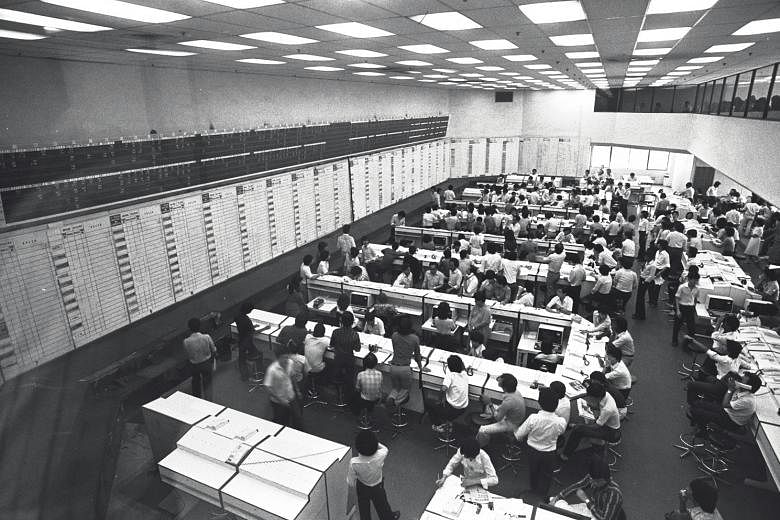The securities market has become a cornerstone of Singapore's financial ecosystem but reaching this level has involved decades of transformation.
Retired stockbroker Narayana Narayana is one of the few who have been in the field long enough to trace the changes that eventually led to the formation of the Singapore Exchange (SGX) in 1999.
He recalls the bare-bones market when he started his trading career in 1957: "There was, of course, no electronic or even central trading room then. Instead, we had just around nine separate brokerage firms here, with four to five traders each. We took all our orders through phone calls, or simply verbally when we met our clients in the afternoon. We'd carry all the prices in our heads and go around peddling our wares."
Mr Narayana told The Straits Times last week there was a rush of companies seeking capital in the 1960s as the British Empire wound down, leading to the earliest wave of initial public offerings.
He has old documents showing that only 191 companies were listed in 1965 on the Stock Exchange of Malaysia and Singapore (Sems). Among them was OCBC.


In just five years, the market expanded to include 256 companies.
The Sems was separated in 1973 into the Stock Exchange of Singapore (SES) and its counterpart in Malaysia. The SES was but one of several exchange companies in Singapore then. Others included the Singapore International Monetary Exchange and the Securities Clearing and Computer Services.
In December 1999, the three entities were merged to create the SGX.
Reforms were soon under way, changing the stock market business model, membership, listing requirements and regulations to enhance competitiveness in an increasingly global financial market.
In less than two decades, the SGX has grown enormously.
There were 387 listed companies when it was formed in 1999, amounting to a total market capitalisation of $403 billion.
This year, there are 768 listed companies with a market capitalisation of $1,010 billion.
"SGX was ahead of its time in many ways," a spokesman for the local bourse told The Straits Times.
He pointed to the introduction of real estate investment trusts (Reits) and business trusts, for instance.
The first Reit was launched in 2002 by real estate giant CapitaLand. Today, the Reit sector, with 34 trusts worth about $64 billion, is the second-largest in Asia, after Japan.
"Another stand-out achievement was the introduction of clearing of over-the-counter (OTC) contracts, even before global regulators began making OTC-clearing mandatory for certain types of derivatives," added the spokesman.
The bourse operator itself, as a blue chip company, has also reaped success, with its pre-tax profit growing at a compounded rate of 11 per cent annually. SGX is focusing on South-east Asia, China and India for new listing candidates while building on its depth in sectors such as commodities, healthcare, maritime, financial services and Reits.
Chief executive Loh Boon Chye said: "Singapore has come a long way over the past 50 years to become a global business and financial hub and SGX is an integral part of that history."

